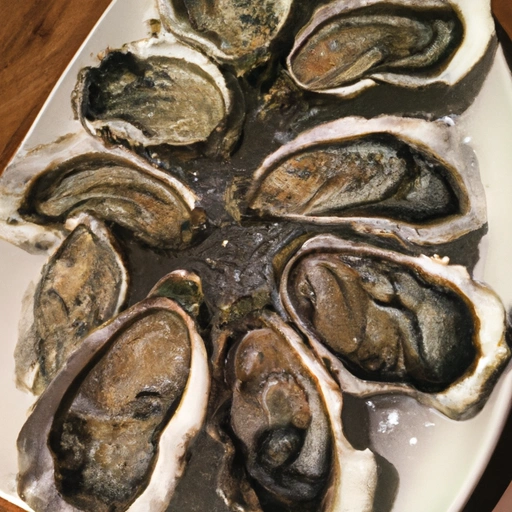Oyster
Description

Oysters are a type of bivalve mollusk that reside in marine habitats such as bays and estuaries. Considered a delicacy in many cultures, oysters can be consumed raw, smoked, boiled, baked, fried, roasted, stewed, canned, pickled, or steamed. With a distinctively briny and delicate flavor, oysters are a popular ingredient in various cuisines, offering a unique taste of the sea to every dish they grace.
Common uses
Oysters are commonly used as a primary ingredient in appetizers, main courses, and as a flavor enhancer in sauces and dressings. They are also served at raw bars, often accompanied by a squeeze of lemon, a dash of hot sauce, or a spoonful of mignonette sauce.
Nutritional value
Calories
Oysters are low in calories, with a dozen medium-sized raw oysters containing approximately 110 kcal (460 kJ).
Protein
Oysters are an excellent source of protein, offering about 12 grams per 100 grams (3.5 oz) serving.
Fat
Oysters contain about 2.5 grams of fat per 100 grams, with a balance of saturated, monounsaturated, and polyunsaturated fats.
Carbohydrates
Carbohydrates are minimal in oysters, with less than 5 grams per 100 grams serving.
Vitamins
Oysters are rich in vitamins, particularly vitamin B12, with a 100 grams serving providing over 100% of the Recommended Dietary Allowance (RDA).
Minerals
Oysters are an excellent source of minerals, especially zinc, selenium, and iron, aiding in immune system function and overall health.
Health benefits
The nutritional profile of oysters supports various health benefits, including improved heart health due to their omega-3 fatty acid content, strengthened bones and teeth from their calcium and vitamin D, and enhanced immune function thanks to high levels of zinc.
Potential risks
Consuming raw oysters can present risks such as exposure to Vibrio bacteria, which can cause foodborne illness. It is important for individuals with compromised immune systems or certain health conditions to avoid raw oysters.
Common recipes
Oysters can be found in classic recipes such as Oysters Rockefeller, oyster stew, and oyster po'boy sandwiches.
Cooking methods
Popular cooking methods for oysters include grilling, broiling, frying, and steaming, each method bringing out different aspects of their flavor.
Pairing with other ingredients
Oysters pair well with a variety of flavors, including lemon, garlic, bacon, and spicy sauces, as well as crisp white wines and light beers.
Summary
Oysters are a versatile and nutritious ingredient that have been enjoyed by cultures around the world for centuries. Whether served raw or cooked, they provide a unique blend of flavors and textures that can enhance a wide array of dishes.